A chess star emerges for the post-computer age!
Chess blog for latest chess news and chess trivia (c) Alexandra Kosteniuk, 2011
Hi everyone,
Here is a sweet interview with Magnus Carlsen in the New Yorker. Though, you would need a subscription to read the full article. Here is an excerpt:
PROFILES - THE PRINCE’S GAMBIT
A chess star emerges for the post-computer age.
by D. T. Max
MARCH 21, 2011
Read the full text of this article in the digital edition (subscription required), or on iPad app.
 ABSTRACT: PROFILE of Norwegian chess star Magnus Carlsen. Writer describes a match between Carlsen and Vladimir Kramnik at the London Chess Classic in December. In the match, Carlsen had recovered from a situation that the Russian champion Garry Kasparov called “impossible” to force a draw. Carlsen, who had just turned twenty two weeks earlier, is largely self-taught, and can play various styles of chess. He has been a full-time chess player since he was fifteen, and spends more than a hundred and sixty days a year on the road. When he is not travelling, he lives in a house with his family in an affluent suburb of Oslo. Carlsen left school two years ago without formally graduating. Tells about Magnus Carlsen Against the World, an event staged by Carlsen’s sponsor G-Star at New York Fashion Week. Carlsen played against a team of three grandmasters. Many people in the chess world considered the contest vulgar. At the trophy presentation, Liv Tyler, another G-Star endorser, gave Carlsen a silver plaque. Most grandmasters start chess extremely young, but Carlsen did not, though he had shown unusual mathematical aptitude as a little boy, which is often found in chess talents. He was more engaged by soccer and skiing. When Magnus was eight, his father made another attempt to engage him in chess and this time, he recalled, he found it “just a richer and more complicated game than any other.” Tells about Carlsen’s development as a chess player. He has a prodigious memory for board positions and moves. He studied with Simen Agdestein, a top Norwegian grandmaster at the time, and later with Kasparov. Briefly discusses the history of chess, which was brought to the West by way of Persia sometime between the eighth and tenth centuries. Describes the approach to the game developed by the Soviets and also tells about the development of computer chess programs. Mentions Kasparov’s loss to the I.B.M. mainframe Big Blue, in 1997. Carlsen said that for him, great chess playing is less the “scientific search for the best approaches” than “psychological warfare with some little tricks.” Describes Carlsen’s performance in the 2011 Wijk aan Zee tournament in Holland, where he lost his confidence. He told the writer, “Suddenly, I started to get these doubts. All of a sudden, my fighting spirit was almost gone.” Carlsen was already thinking ahead to the Amber chess tournament, which is being played this month, in Monaco. The games there do not affect anyone’s official ranking, since the participants play either rapid or blindfold chess; all the same, he said, “I really, really want to win and restore the power balance.”
ABSTRACT: PROFILE of Norwegian chess star Magnus Carlsen. Writer describes a match between Carlsen and Vladimir Kramnik at the London Chess Classic in December. In the match, Carlsen had recovered from a situation that the Russian champion Garry Kasparov called “impossible” to force a draw. Carlsen, who had just turned twenty two weeks earlier, is largely self-taught, and can play various styles of chess. He has been a full-time chess player since he was fifteen, and spends more than a hundred and sixty days a year on the road. When he is not travelling, he lives in a house with his family in an affluent suburb of Oslo. Carlsen left school two years ago without formally graduating. Tells about Magnus Carlsen Against the World, an event staged by Carlsen’s sponsor G-Star at New York Fashion Week. Carlsen played against a team of three grandmasters. Many people in the chess world considered the contest vulgar. At the trophy presentation, Liv Tyler, another G-Star endorser, gave Carlsen a silver plaque. Most grandmasters start chess extremely young, but Carlsen did not, though he had shown unusual mathematical aptitude as a little boy, which is often found in chess talents. He was more engaged by soccer and skiing. When Magnus was eight, his father made another attempt to engage him in chess and this time, he recalled, he found it “just a richer and more complicated game than any other.” Tells about Carlsen’s development as a chess player. He has a prodigious memory for board positions and moves. He studied with Simen Agdestein, a top Norwegian grandmaster at the time, and later with Kasparov. Briefly discusses the history of chess, which was brought to the West by way of Persia sometime between the eighth and tenth centuries. Describes the approach to the game developed by the Soviets and also tells about the development of computer chess programs. Mentions Kasparov’s loss to the I.B.M. mainframe Big Blue, in 1997. Carlsen said that for him, great chess playing is less the “scientific search for the best approaches” than “psychological warfare with some little tricks.” Describes Carlsen’s performance in the 2011 Wijk aan Zee tournament in Holland, where he lost his confidence. He told the writer, “Suddenly, I started to get these doubts. All of a sudden, my fighting spirit was almost gone.” Carlsen was already thinking ahead to the Amber chess tournament, which is being played this month, in Monaco. The games there do not affect anyone’s official ranking, since the participants play either rapid or blindfold chess; all the same, he said, “I really, really want to win and restore the power balance.”
You can also read a nice post on this article here by Richard Brody.
From Alexandra Kosteniuk's
www.chessblog.com
Also see her personal blog at
www.chessqueen.com
Hi everyone,
Here is a sweet interview with Magnus Carlsen in the New Yorker. Though, you would need a subscription to read the full article. Here is an excerpt:
PROFILES - THE PRINCE’S GAMBIT
A chess star emerges for the post-computer age.
by D. T. Max
MARCH 21, 2011
Read the full text of this article in the digital edition (subscription required), or on iPad app.
 ABSTRACT: PROFILE of Norwegian chess star Magnus Carlsen. Writer describes a match between Carlsen and Vladimir Kramnik at the London Chess Classic in December. In the match, Carlsen had recovered from a situation that the Russian champion Garry Kasparov called “impossible” to force a draw. Carlsen, who had just turned twenty two weeks earlier, is largely self-taught, and can play various styles of chess. He has been a full-time chess player since he was fifteen, and spends more than a hundred and sixty days a year on the road. When he is not travelling, he lives in a house with his family in an affluent suburb of Oslo. Carlsen left school two years ago without formally graduating. Tells about Magnus Carlsen Against the World, an event staged by Carlsen’s sponsor G-Star at New York Fashion Week. Carlsen played against a team of three grandmasters. Many people in the chess world considered the contest vulgar. At the trophy presentation, Liv Tyler, another G-Star endorser, gave Carlsen a silver plaque. Most grandmasters start chess extremely young, but Carlsen did not, though he had shown unusual mathematical aptitude as a little boy, which is often found in chess talents. He was more engaged by soccer and skiing. When Magnus was eight, his father made another attempt to engage him in chess and this time, he recalled, he found it “just a richer and more complicated game than any other.” Tells about Carlsen’s development as a chess player. He has a prodigious memory for board positions and moves. He studied with Simen Agdestein, a top Norwegian grandmaster at the time, and later with Kasparov. Briefly discusses the history of chess, which was brought to the West by way of Persia sometime between the eighth and tenth centuries. Describes the approach to the game developed by the Soviets and also tells about the development of computer chess programs. Mentions Kasparov’s loss to the I.B.M. mainframe Big Blue, in 1997. Carlsen said that for him, great chess playing is less the “scientific search for the best approaches” than “psychological warfare with some little tricks.” Describes Carlsen’s performance in the 2011 Wijk aan Zee tournament in Holland, where he lost his confidence. He told the writer, “Suddenly, I started to get these doubts. All of a sudden, my fighting spirit was almost gone.” Carlsen was already thinking ahead to the Amber chess tournament, which is being played this month, in Monaco. The games there do not affect anyone’s official ranking, since the participants play either rapid or blindfold chess; all the same, he said, “I really, really want to win and restore the power balance.”
ABSTRACT: PROFILE of Norwegian chess star Magnus Carlsen. Writer describes a match between Carlsen and Vladimir Kramnik at the London Chess Classic in December. In the match, Carlsen had recovered from a situation that the Russian champion Garry Kasparov called “impossible” to force a draw. Carlsen, who had just turned twenty two weeks earlier, is largely self-taught, and can play various styles of chess. He has been a full-time chess player since he was fifteen, and spends more than a hundred and sixty days a year on the road. When he is not travelling, he lives in a house with his family in an affluent suburb of Oslo. Carlsen left school two years ago without formally graduating. Tells about Magnus Carlsen Against the World, an event staged by Carlsen’s sponsor G-Star at New York Fashion Week. Carlsen played against a team of three grandmasters. Many people in the chess world considered the contest vulgar. At the trophy presentation, Liv Tyler, another G-Star endorser, gave Carlsen a silver plaque. Most grandmasters start chess extremely young, but Carlsen did not, though he had shown unusual mathematical aptitude as a little boy, which is often found in chess talents. He was more engaged by soccer and skiing. When Magnus was eight, his father made another attempt to engage him in chess and this time, he recalled, he found it “just a richer and more complicated game than any other.” Tells about Carlsen’s development as a chess player. He has a prodigious memory for board positions and moves. He studied with Simen Agdestein, a top Norwegian grandmaster at the time, and later with Kasparov. Briefly discusses the history of chess, which was brought to the West by way of Persia sometime between the eighth and tenth centuries. Describes the approach to the game developed by the Soviets and also tells about the development of computer chess programs. Mentions Kasparov’s loss to the I.B.M. mainframe Big Blue, in 1997. Carlsen said that for him, great chess playing is less the “scientific search for the best approaches” than “psychological warfare with some little tricks.” Describes Carlsen’s performance in the 2011 Wijk aan Zee tournament in Holland, where he lost his confidence. He told the writer, “Suddenly, I started to get these doubts. All of a sudden, my fighting spirit was almost gone.” Carlsen was already thinking ahead to the Amber chess tournament, which is being played this month, in Monaco. The games there do not affect anyone’s official ranking, since the participants play either rapid or blindfold chess; all the same, he said, “I really, really want to win and restore the power balance.”You can also read a nice post on this article here by Richard Brody.
From Alexandra Kosteniuk's
www.chessblog.com
Also see her personal blog at
www.chessqueen.com
Labels: chess blog, Magnus Carlsen




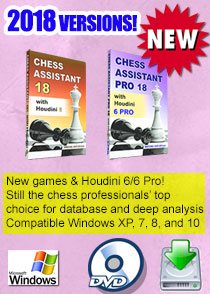























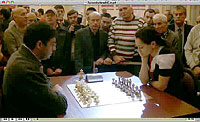
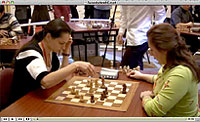
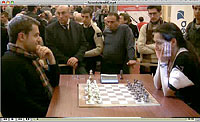

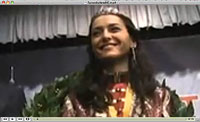

0 Comments:
Post a Comment
Note: Only a member of this blog may post a comment.
Subscribe to Post Comments [Atom]
<< Home